| Pages:
1
2 |
bulerias1981
Oud Junkie
    
Posts: 771
Registered: 4-26-2009
Location: Beacon, NY
Member Is Offline
Mood: John Vergara Luthier Lord of the Strings instrument making and repair
|
|
I dont have images of the linings to post since I have some concerts coming up (Thursday my weekly restaurant gig in NYC, Friday a concert in DC and
its one of my better sounding ouds)
However, I was able to get a mirror into a hole in the center of the rosette, and this is where I saw the linings. A rough judgement is they seem to
be about 2mm thick, 9mm wide. The braces are butted against them tightly, and the linings are not joined to the blocks, and terminate roughly 15mm
from the blocks. The entire face is not original, as Najib rebuilt it. I heard Najib tell me it is importart to fit the braces tightly against the
bowl. With an emphasis on the word "tight". And there is no cut out into the linings. The oud is about 40 years old. I dont think the linings were
added for structual reasons, but rather to dissapate the echo effect, giving a more percussive and punchy sound.
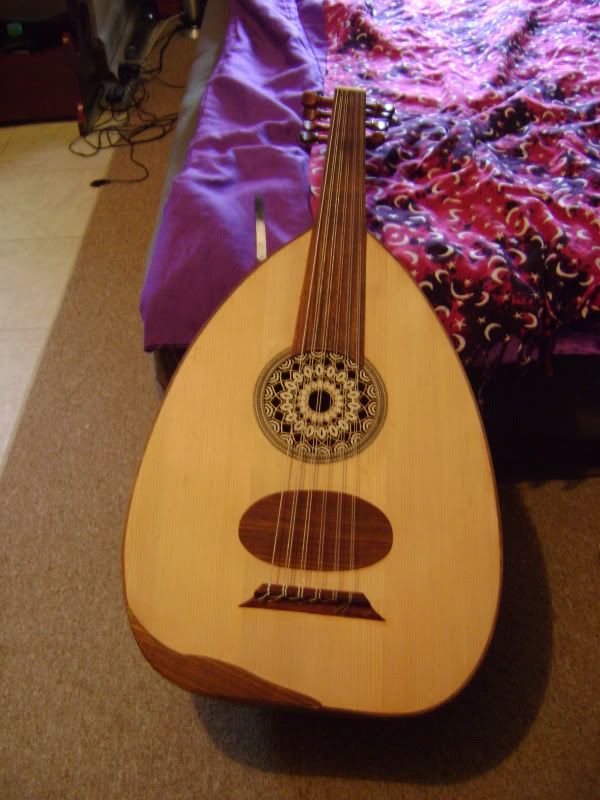

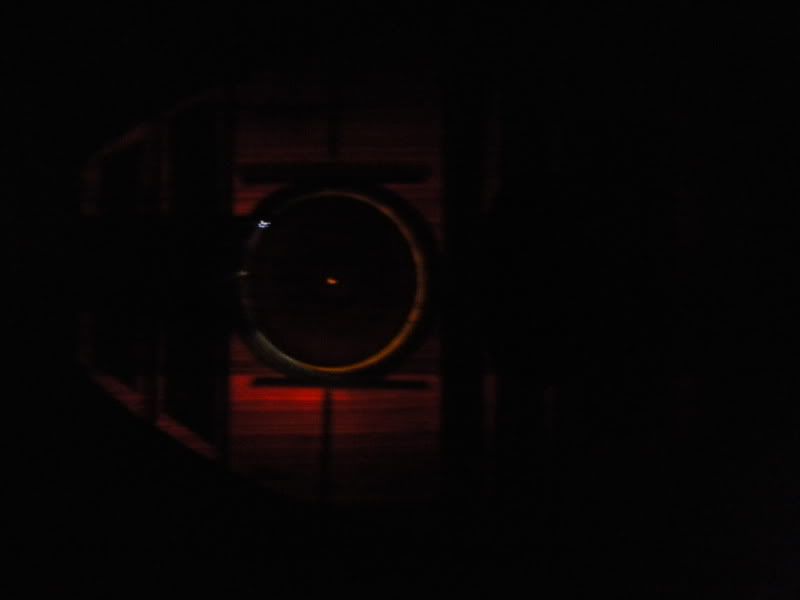
In the last photo you'll notice something unusual also. I tied a string to my maglite flashlight with LED upgrade. I removed the collar around the
light, so now it stays on and becomes narrow enough to fit in the hole of the shamsa, and I lowered into the oud. I then covered the shamsa to retain
the light, and took a photo. And not only does the bracing location become revealed, but other things. Such as something between the braces! When I
put the mirror in, I saw not only the linings that I was talking about, but also pieces of robust brown paper bags pasted between the bracings! I
tried to come up with a reason for this. Certainly these strips of paper bag were not installed to make up for a thin flimsy face, because indeed the
face is fairly thick. (don't have a measurement yet). I know this because even with the flashlight in the oud and the rosette covered, its still very
dim inside, compared to other ouds I've done this with, the moment I place the flash light, the face because so illuminated, and the bracing is so
very obvious. This oud is not that way. The areas without the bag are still dim and you have to focus hard to see.
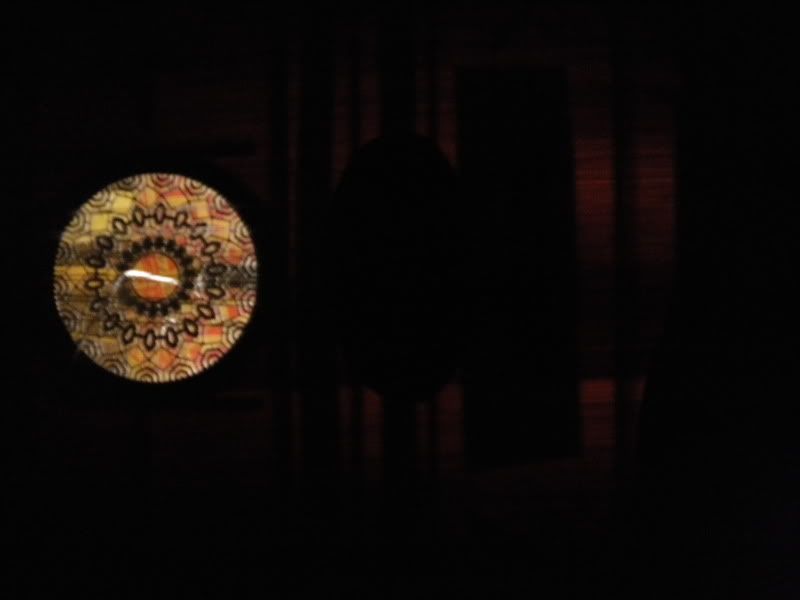
This oud is no thumper. With many people giving me offers for it. I'm sure a couple people in on the forum can attest to that. It has tons of power.
(Large bowl, big toward the bottom) Powerful, lively present basses, and crisp/percussive trebles, that dont echo at all.
|
|
|
bulerias1981
Oud Junkie
    
Posts: 771
Registered: 4-26-2009
Location: Beacon, NY
Member Is Offline
Mood: John Vergara Luthier Lord of the Strings instrument making and repair
|
|
This photo I found on this forum and saved it to my computer. I don't know from which thread its from, or what the purpose behind the paper pasted to
the belly is for, but I do find it interesting and possbily related to my oud. I couldn't search it by its file name "PaperFace.jpg" and I know of no
other way other than going through the pages of the forum one by one, viewing each thread individually (as I once did!). But it would be good to
verify this. Possbily someone out there will recognize this photo and shed some light on it. Maybe even from your old egyptian oud, jdowning?
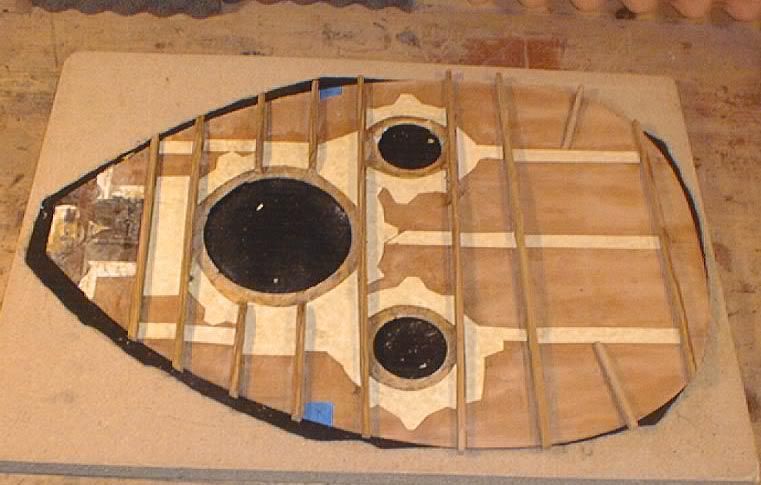
|
|
|
jdowning
Oud Junkie
    
Posts: 3485
Registered: 8-2-2006
Location: Ontario, Canada
Member Is Offline
Mood: No Mood
|
|
Thanks for the additional information. Yes it is very important, structurally, for the ends of the braces to fit perfectly against the sides of the
ribs. So the oud is quite modern (c1970) and the linings may be original and not added by Najib?
I cannot identify the sound board except to confirm that it is not my Egyptian oud (image of my oud sound board is attached for comparison).
Interesting to see the small braces on either side of the bridge - similar to those on the Al Arja bros (Lebanon) oud owned by ALAMI as reported
earlier on this forum.
The paper is for additional reinforcement either to repair longitudinal cracks in the sound board or to provide additional support for inlays cut the
full depth of the sound board. This oud likely has both applications - the paper around the sound holes being to support inlay work (as well as the
paper between the two top braces to support an inlaid fingerboard extension?) and the long narrow strips for crack repair.
Note on my oud sound board the remains of paper reinforcement under the inlaid fingerboard extension. Of course reinforcement of oud (and lute) bowl
rib joints with glued paper strips (using hot hide glue) is traditional practice that is centuries old.
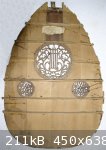
|
|
|
bulerias1981
Oud Junkie
    
Posts: 771
Registered: 4-26-2009
Location: Beacon, NY
Member Is Offline
Mood: John Vergara Luthier Lord of the Strings instrument making and repair
|
|
No, the entire top is done by Najib, with the addition of the liners, and the paper. Which again, I doubt was done for structural purposes. So what
other purposes are there?
I would like more information on Al Arja brothers.
|
|
|
jdowning
Oud Junkie
    
Posts: 3485
Registered: 8-2-2006
Location: Ontario, Canada
Member Is Offline
Mood: No Mood
|
|
What does Najib have to say about his work?
A detailed discussion about ALAMI's Al-Arja oud can be found in the topic "Oud or Lute" posted by Dr Oud in June 2007 on this forum. Not much is known
about the al-Arja brothers of Tripoli except that they were also furniture makers and were of the Christian faith.
|
|
|
Dr. Oud
Oud Junkie
    
Posts: 1370
Registered: 12-18-2002
Location: Sacramento, CA, USA
Member Is Offline
Mood: better than before
|
|
Quote: Originally posted by bulerias1981  | This photo I found on this forum and saved it to my computer. I don't know from which thread its from, or what the purpose behind the paper pasted to
the belly is for, but I do find it interesting and possbily related to my oud. I couldn't search it by its file name "PaperFace.jpg" and I know of no
other way other than going through the pages of the forum one by one, viewing each thread individually (as I once did!). But it would be good to
verify this. Possbily someone out there will recognize this photo and shed some light on it. Maybe even from your old egyptian oud, jdowning?
[IMG]http://i49.photobucket.com/albums/f254/Bulerias81
/PaperFace.jpg[/IMG] |
This is a restored 1927 Gamil George soundboard. The paper is parchment, infused with hide glue to reinforce seams and cracks in the face. The
soundboard and braces are original, but there was separation around the inlay and several cracks and open seams. Here's the front view before
mounting...
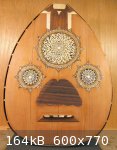
and the video (pardon the low fidelity - use low volume to minimize the distorsion)
http://youtu.be/Fkp9PkVUY4s
|
|
|
bulerias1981
Oud Junkie
    
Posts: 771
Registered: 4-26-2009
Location: Beacon, NY
Member Is Offline
Mood: John Vergara Luthier Lord of the Strings instrument making and repair
|
|
Nice work. I'd like to get my hands on a Gamil Georges oud myself.
|
|
|
RubabPlayer
Oud Maniac
   
Posts: 89
Registered: 5-20-2009
Member Is Offline
Mood: No Mood
|
|
Sorry to restart an ancient thread, but I recently have run across a couple things that fit in here and may be of interest.
In Iran there are now innovative instruments that add a hybrid of wood and skin top construction. The Tanboor Shurangiz and Setar Shurangiz do this
for smaller long neck strings. But there are also Barbat with skin covering about 50% of the top of the instrument. The rest done in wood. The bridge
is placed on top of a small wood plate that then sits on top of the skin. This gives these instruments the intensity and power of the skin top sound
with a little more stability from the wood plate under the bridge.
Hossein Alizadeh is using this with the Shurangiz to amazing results. I have not been able to find a single video of the Ou instrument but I will try.
|
|
|
RubabPlayer
Oud Maniac
   
Posts: 89
Registered: 5-20-2009
Member Is Offline
Mood: No Mood
|
|
Also Dimitris in Greece has made some Lavta with skin top in this manner along with sympathetic drone strings. I am so curious if resonant drones have
ever been used on the Oud.
The Persian Robab, which I think shares a lot of sonic realm with the Oud, has made great use of 7-11 sympathetic strings to give it wonderful
resonance. Not to the degree of an Afghan Rubab, but still very nice sounding.
Here is the Lavta
http://www.youtube.com/watch?v=AH0u_Mh76kk
|
|
|
farukturunz
Oud Junkie
    
Posts: 569
Registered: 8-16-2005
Location: Istanbul, Turkey
Member Is Offline
Mood: hopeful
|
|
Quote: Originally posted by bulerias1981  | What they know or what they believe will incease the likelyhood of a purely nice traditional earthy Arabic tone.
My questions to the makers:
1) Is there a kind of sound you try to achieve when starting to make an oud?
2) What sound is it that you're trying to achieve?
3) Do you actually achieve it?
|
That oud's sound is a real source of inspiration.
Thank you bulerias 1981 for sending the link.
Let me try to reply your questions:
1) It is an inevitable first stage for making an oud. Of course this first step is not consisting of merely a desire for a kind of sound to achieve,
but also a long list of integral information...Like the effect of the size, form, wood, tuning range, finish and especially the bracing pattern and
braces.
2) You have very well defined:" When I say traditional, I dont mean in that crappy kind of way. Where the sound is weak and dies immediately after the
rishi attack"...I also do not aim to achieve that type of sound. When I am making a Turkish oud I always try to keep in my imagination the sound of
the ouds I liked best.
When I am making an Arabic oud, again I try to understand what type of oud sound is liked in Arabic tradition.
So, Bassam Saba's glorious Gamil Georges oud's sound infuses me to try to achieve.
3) I actually achieved the sort of sound I've heard or been able to imagine.
Kind regards...
|
|
|
| Pages:
1
2 |